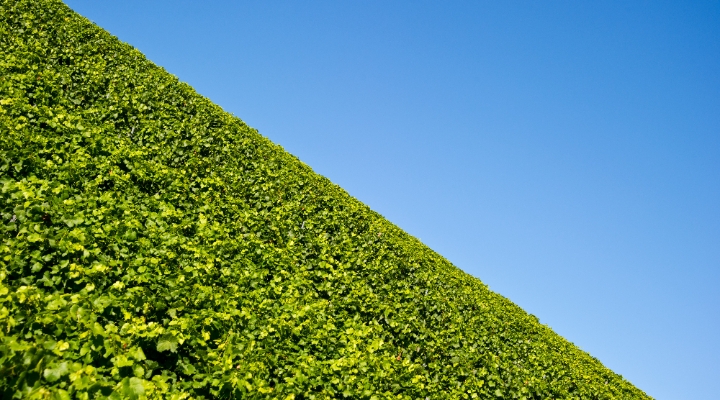:quality(80)/cloudfront-us-east-1.images.arcpublishing.com/morningstar/Q7DQFQYMEZD7HIR6KC5R42XEDI.png)
Sustainable investing is at a crossroads: As a result of the backlash to ESG, sustainable equity funds had their first annual net outflows in 2023, in both the US and Europe.
Even so, it might be too early to say farewell to sustainable investing. In the first quarter of 2024, flows into 'light green' SFDR Article 8 funds rebounded in Europe, netting in EUR 14 billion of new money, Morningstar data shows. On the other hand, though, 'dark green' Article 9 funds bled money for the second consecutive quarter, registering net outflows for almost EUR 4 billion.
This suggests that while investment in targeted ESG efforts is receding, investors still like to park assets in funds that exclude high-risk securities.
Morningstar Sustainalytics partnered with Natixis Investment Managers Solutions on an analysis of return- and risk-related behaviour of assets with different ESG Risk Ratings. They found portfolios with low ESG risk typically display better raw and risk-adjusted returns than portfolios with high ESG risk—and they have a better ability to withstand financial crises.
ESG Offers Downside Protection During Market Crises
Sustainalytics used Morningstar Direct's scenario analysis tool to run a series of stress tests on ESG-constructed portfolios during three past crises: the 2007-09 subprime crisis, the 2010 Greek crisis, and the 2011 US debt ceiling crisis. In all regions and for all three scenarios, the lower ESG risk portfolios had better return performance.
This is likely because the factors common to the lower ESG risk portfolios regarding volatility, financial health, valuation uncertainty, and economic moat generate downside protection under these more negative economic scenarios—suggesting that low ESG risk portfolios have a better ability to withstand financial crises.
Low ESG Risk Generates Better Risk-Adjusted Performance in the Long Run
Averaging returns over the period examined (December 2014–April 2023), the findings show that lower ESG risk portfolios outperform their respective regional high ESG risk portfolios in all three regions on returns.
Average annualized returns across regions
:quality(80)/cloudfront-us-east-1.images.arcpublishing.com/morningstar/RJB3JGOM7ZH7HGCD5BZRHETUJI.png)
To take a closer look at these returns by region:
- Europe has been the most consistently outperforming region for low ESG risk portfolios since January 2015. The spread between the low and high ESG risk portfolios continued a daily year-over-year expansion for nearly five years straight, apart from a slight decline between November 2016 and January 2017.
- In North America, the two portfolios appear to trade very closely in line with one another. Significant outperformance for the low ESG risk portfolio occurred when the market declined in 2015, but the gap narrowed shortly thereafter and even turned negative for a period as the market rose in 2018.
- For the Asia-Pacific region, the ESG risk premium was strong in 2015, allowing it to continue compounding returns into other years. Much like Europe, the strategy slowed from December 2017 to January 2018 but regained momentum until the covid-19 selloff rebound in March 2020.
These extra returns were generally not associated with higher risk. The chart below shows that compared with high ESG risk portfolios, the standard deviations of the low ESG risk portfolios are either lower, for example in Europe, the US and Canada, or comparable, for example in the Asia-Pacific region.
While the United States and Canada had a narrower positive return spread in the chart above, the volatility difference shown below is more substantial—highlighting the downside protection low ESG risk portfolios offer.
Average Annualized Standard Deviation Across Regions:quality(80)/cloudfront-us-east-1.images.arcpublishing.com/morningstar/YFGEA5LFMZBLZJF3RBMFF2NU4U.png)
Not Every Sector Rewards Low ESG Risk
The results indicate that investing in lower ESG risk portfolios is particularly rewarding in the healthcare, consumer cyclicals, utilities, and basic materials sectors, with a positive return difference between low and high ESG risk portfolios in all regions. Lower ESG risk in industrials works well in Europe but seems to have a neutral outcome in the US and Canada and in Asia-Pacific.
In the technology sector, low ESG risk generates strong returns in Europe (up 25.9% per year) and is slightly effective in Asia-Pacific (up 2.1%) but then underperforms in the United States and Canada (down 6.9%).
Cumulative Return Difference by Sector Between Low and High ESG Risk Portfolios
:quality(80)/cloudfront-us-east-1.images.arcpublishing.com/morningstar/ZOLSJ7AFLBASTHE6INFDEUFO4M.png)
This could be because large US tech companies, by far the best-performing in recent years, actually score poorly on ESG metrics: The ESG Risk Ratings for big names such as Amazon.com [AMZN], Meta [META], or Alphabet [GOOG] are classified as High. In most cases, this is attributable to the companies’ involvement in controversies.







:quality(80)/cloudfront-us-east-1.images.arcpublishing.com/morningstar/6BCTH5O2DVGYHBA4UDPCFNXA7M.png)






















